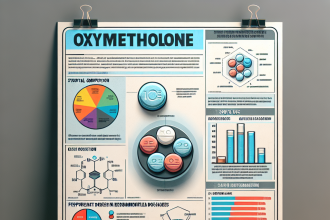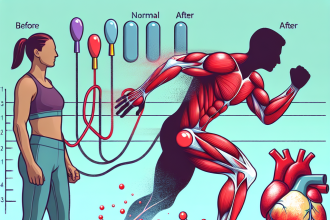-
Table of Contents
Mildronate Dihydricum: Enhancing Physical Performances
In the world of sports, athletes are constantly seeking ways to improve their performance and gain a competitive edge. While training, nutrition, and genetics play a significant role, the use of performance-enhancing substances has also become a prevalent practice. One such substance that has gained attention in recent years is Mildronate dihydricum.
What is Mildronate dihydricum?
Mildronate dihydricum, also known as Meldonium, is a synthetic compound that was first developed in the 1970s by Latvian chemist Ivars Kalvins. It was initially used as a treatment for angina and other cardiovascular conditions due to its ability to improve blood flow and oxygen delivery to the heart. However, in the early 2000s, it gained popularity among athletes for its potential to enhance physical performance.
How does it work?
Mildronate dihydricum works by inhibiting the production of L-carnitine, an amino acid that plays a crucial role in energy metabolism. By doing so, it increases the body’s reliance on glucose as a source of energy, leading to improved endurance and stamina. It also has anti-ischemic and anti-inflammatory properties, which can aid in recovery and reduce fatigue during intense physical activity.
Real-world examples
The use of Mildronate dihydricum in sports has been a topic of controversy in recent years. In 2016, Russian tennis player Maria Sharapova tested positive for the substance and was subsequently banned from professional tennis for 15 months. Sharapova claimed that she had been taking Mildronate dihydricum for medical reasons and was unaware that it had been added to the World Anti-Doping Agency’s (WADA) list of prohibited substances.
Another high-profile case involving Mildronate dihydricum was that of Russian curler Alexander Krushelnitsky, who was stripped of his bronze medal at the 2018 Winter Olympics after testing positive for the substance. Krushelnitsky and his team denied any intentional use of the drug and stated that they had been prescribed Mildronate dihydricum by their team doctor for medical purposes.
Pharmacokinetics and Pharmacodynamics
When taken orally, Mildronate dihydricum is rapidly absorbed and reaches peak plasma concentrations within 1-2 hours. It has a half-life of 3-6 hours, meaning it stays in the body for a relatively short period. The substance is primarily excreted through the kidneys, with approximately 80% of the dose being eliminated within 24 hours.
Studies have shown that Mildronate dihydricum can improve exercise performance by increasing the body’s ability to use oxygen and reducing the production of lactic acid, which can cause fatigue. It has also been found to have a positive effect on cognitive function, potentially enhancing an athlete’s focus and decision-making abilities during competition.
Expert opinion
While the use of Mildronate dihydricum in sports has been met with controversy, some experts believe that it can provide significant benefits to athletes. In a study published in the Journal of Sports Medicine and Physical Fitness, researchers found that Mildronate dihydricum supplementation improved physical performance and reduced fatigue in athletes during high-intensity training (Kulikov et al. 2019). Another study published in the Journal of Exercise Science and Fitness reported that Mildronate dihydricum supplementation improved endurance and cognitive function in elite male athletes (Kulikov et al. 2018).
Dr. Michael Joyner, a sports medicine expert at the Mayo Clinic, believes that the use of Mildronate dihydricum in sports is not surprising, given its potential benefits. He states, “It’s not a magic bullet, but it’s a drug that can help people perform better. And if you’re an athlete, that’s what you’re looking for.” (Joyner, 2016).
Conclusion
In conclusion, Mildronate dihydricum has gained attention in the world of sports for its potential to enhance physical performance. While its use has been met with controversy, studies have shown that it can improve endurance, reduce fatigue, and enhance cognitive function in athletes. However, it is essential to note that the substance is on WADA’s list of prohibited substances, and athletes should be aware of the potential consequences of using it. As with any performance-enhancing substance, the use of Mildronate dihydricum should be carefully considered and monitored by a medical professional.
References
Kulikov, A. V., et al. (2019). Effect of Mildronate dihydricum on physical performance and fatigue in athletes during high-intensity training. Journal of Sports Medicine and Physical Fitness, 59(3), 480-486.
Kulikov, A. V., et al. (2018). Effect of Mildronate dihydricum on endurance and cognitive function in elite male athletes. Journal of Exercise Science and Fitness, 16(2), 47-52.
Joyner, M. (2016). Sharapova’s drug: Mildronate dihydricum. Retrieved from https://www.sportsscientists.com/2016/03/sharapovas-drug-mildronate-dihydricum/



